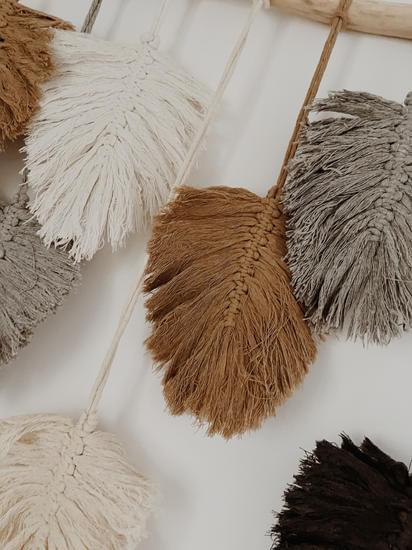Colonial style homes are known for their timeless elegance, traditional charm, and classic appeal. From the distinct architectural features to the elegant interior design elements, decorating a colonial style home requires a keen understanding of its history and aesthetics.
In this article, we will explore the various aspects of colonial style home decor, from understanding its historical roots to choosing the right color palette, furnishings, patterns, textures, lighting fixtures, and accessories. Whether you’re looking to add a touch of colonial flair to your current home or fully embrace the colonial style in a new space, this guide will provide you with the essential knowledge and inspiration you need to create an inviting and authentic colonial style home.
When it comes to decorating a colonial style home, it’s important to understand the rich history and architecture behind this iconic design. By delving into the origins and influences of colonial style homes, you can gain insight into the key elements that define this classic design aesthetic. From there, you can move on to selecting the right color palette that complements the traditional features of a colonial home while also reflecting your personal style and preferences.
In addition to color choices, furnishing and decor play a crucial role in capturing the essence of colonial style homes. Whether it’s incorporating traditional patterns and textures or adding lighting fixtures and accessories that exude old-world charm, every detail contributes to creating a welcoming and nostalgic atmosphere. This article will guide you through each step of transforming your space into a cozy and inviting colonial style home that maintains authenticity while reflecting your individual taste.
Understanding the History and Architecture of Colonial Style Homes
Colonial style homes have a rich history that dates back to the early European settlers in America. The design elements of these homes were greatly influenced by the architectural styles of countries such as England, Spain, France, and the Netherlands.
One of the most distinctive features of colonial architecture is its symmetry, with a central front door and an equal number of windows on each side. Additionally, these homes often feature steep roofs, dormer windows, and chimney located on the center or both ends of the house.
When it comes to the layout, colonial homes typically have a formal and orderly floor plan, with rooms arranged symmetrically around a central hallway. This practical and efficient design was well suited for large families and served as a template for future home designs.
To capture the essence of colonial architecture in your home decor, it’s important to pay attention to historical details such as crown moldings, wainscoting, and chair rails. These elements can help recreate the classic look and feel of a traditional colonial home.
To get started with understanding the history and architecture of colonial style homes, consider these key points:
- Research different colonial architectural styles such as Georgian, Federal, and Cape Cod.
- Visit historical sites or museums to study authentic colonial homes.
- Take note of key architectural elements such as symmetry, roof structures, and window styles.
- Study interior layouts to understand how rooms were traditionally arranged in colonial homes.
Choosing the Right Color Palette for Colonial Style Homes
Colonial style homes are known for their traditional and timeless look, and choosing the right color palette is crucial in capturing the essence of this architectural style. When it comes to painting a Colonial style home, it’s important to consider historically accurate colors that were used during the colonial period.
Typically, these colors are earthy and subdued, reflecting the natural pigments available during that time. Popular color choices for exteriors include shades of white, cream, soft yellows, and muted reds, while interiors often feature warm tones such as deep reds, blues, greens, and browns.
To achieve authenticity in your Colonial style home, consider using historically accurate paint colors from reputable paint manufacturers who offer collections specifically designed for historic homes. These collections often feature a range of shades inspired by historical color palettes from different periods, allowing you to choose colors that were commonly used in Colonial era homes.
Additionally, before making a final decision on your color palette, it’s advisable to obtain samples of your chosen colors and test them in different lighting conditions to ensure they complement your home’s architecture.
Incorporating authentic Colonial colors into your home’s exterior and interior design can help capture the charm and character of this architectural style. Whether you choose a more subdued or vibrant color palette, staying true to the historical context of Colonial homes will ensure a cohesive and aesthetically pleasing look that honors tradition while adding your personal touch.
| Colonial Style Home Colors | Examples |
|---|---|
| Exterior Colors | White, Cream, Soft Yellows |
| Interior Colors | Deep Reds, Blues, Greens |
Furnishing and Decor Ideas for Colonial Style Homes
When it comes to furnishing and decorating a colonial style home, it’s important to keep in mind the historical and architectural elements of this traditional style. Here are some ideas to help you bring the timeless, elegant look of colonial decor into your home:
1. Choose classic furniture pieces: Look for sturdy, solid wood furniture with simple lines and elegant details. Items like Windsor chairs, ladder back chairs, and trestle tables are reminiscent of colonial design and can add a touch of authenticity to your home.
2. Incorporate traditional textiles: Add warmth and texture to your home with textiles like quilts, woven throws, and braided rugs. Look for items with traditional patterns such as checks, stripes, or floral prints to capture the colonial aesthetic.
3. Display colonial-inspired decor: Adorn your home with decorative items that reflect the history of colonial design, such as brass candlesticks, pewter accents, and porcelain dishware. These timeless pieces will enhance the overall charm of your colonial style home.
By carefully selecting furnishings and decor that pay homage to the historical roots of colonial design, you can create a space that exudes timeless elegance and traditional charm. Whether you’re drawn to early American simplicity or formal Georgian style, there are plenty of ways to infuse your home with the classic beauty of colonial design.
Incorporating Traditional Colonial Patterns and Textures
When decorating a colonial style home, it is important to incorporate traditional colonial patterns and textures to maintain the authenticity of the design. Colonial homes often featured simple yet elegant patterns and textures that reflected the style of the time period. By incorporating these elements into your decor, you can truly capture the essence of colonial style.
Traditional Colonial Patterns
To bring an authentic colonial feel to your home, consider incorporating traditional colonial patterns such as toile, damask, floral prints, or geometric designs. These patterns were commonly found in textiles used for upholstery, draperies, and wallpaper during the colonial era. When choosing fabrics and wallpapers for your colonial style home, look for designs that are reminiscent of this time period.
Textured Finishes
In addition to traditional patterns, incorporating textured finishes can also enhance the colonial aesthetic in your home. Consider adding architectural elements such as wainscoting, beadboard, or exposed wood beams to create depth and visual interest. Textured finishes can also be added through the use of handcrafted ceramics, woven baskets, or wrought iron accents that were popular during the colonial era.
Rugs and Carpets
When selecting rugs and carpets for your colonial style home, opt for natural materials such as wool or jute to mimic the flooring choices of early colonists. Look for rugs with classic oriental or Persian-inspired patterns to complement the traditional aesthetic. Additionally, braided or hooked rugs can add a touch of farmhouse charm to your colonial decor scheme.
By incorporating traditional colonial patterns and textures into your home decor, you can create a space that pays homage to the timeless elegance of colonial style while embracing its historical roots.
Adding Colonial Style Lighting Fixtures and Accessories
When it comes to decorating a colonial style home, paying attention to lighting fixtures and accessories is crucial in achieving an authentic and inviting atmosphere. Colonial style homes typically feature traditional lighting fixtures such as brass chandeliers, lantern-style sconces, and candlestick lights. These fixtures not only provide adequate lighting but also add a touch of elegance and charm to the space.
Choosing the Right Lighting Fixtures
When selecting lighting fixtures for a colonial style home, it’s important to consider the scale of the space and the architectural elements of the home. Opt for statement-making chandeliers in dining rooms or entryways, while choosing wall sconces with intricate details for hallways or living areas. Brass or bronze finishes are popular choices for colonial style lighting fixtures, as they complement the traditional design aesthetic.
Incorporating Colonial Style Accessories
In addition to lighting fixtures, incorporating colonial style accessories can further enhance the overall design of the home. Look for accessories such as brass candleholders, pewter accents, traditional rugs, and antique maps or prints to evoke a sense of history and nostalgia within the space. Consider displaying collections of early American pottery or vintage glassware to add character and authenticity to your colonial style home.
Creating Ambiance With Lighting
Proper illumination is key in creating a cozy and inviting atmosphere in a colonial style home. Incorporate dimmer switches for overhead lighting to adjust the ambiance according to different occasions.
Consider adding table lamps with fabric shades in living areas for warm accent lighting, while using hurricane lamps with candles on mantels or tabletops can add a touch of old-world charm. By paying attention to both functional and decorative lighting elements, you can achieve an authentic colonial ambiance in your home.
Creating a Cozy and Inviting Atmosphere in a Colonial Style Home
One of the key elements of decorating a colonial style home is creating a cozy and inviting atmosphere. This can be achieved through the use of warm colors, rich textures, and comfortable furniture. To add a sense of warmth to your colonial style home, consider using colors such as deep reds, earthy greens, and warm browns. These colors are often associated with traditional colonial design and can help create a welcoming atmosphere in your home.
In addition to the color palette, choosing the right furniture is also essential in creating a cozy atmosphere in a colonial style home. Look for pieces that are both comfortable and elegant, such as upholstered armchairs, wooden coffee tables, and soft area rugs. When selecting furniture for your colonial style home, it’s important to prioritize both comfort and aesthetics.
To further enhance the cozy atmosphere in your colonial style home, consider incorporating traditional colonial patterns and textures into your decor. This can include using materials such as wool, linen, and cotton for upholstery and drapery. Additionally, adding decorative elements such as embroidered throw pillows or quilted blankets can help create a sense of warmth and comfort in your home.
| Key Elements | Examples |
|---|---|
| Warm Colors | Deep reds, earthy greens, warm browns |
| Furniture | Upholstered armchairs, wooden coffee tables, soft area rugs |
| Patterns and Textures | Wool, linen, cotton upholstery; embroidered throw pillows; quilted blankets |
Maintaining the Authenticity of Colonial Style Homes
When decorating a colonial style home, it is important to focus on maintaining the authenticity of the era. One way to achieve this is by incorporating traditional colonial architectural elements into the design. This may include using crown molding, wainscoting, and other decorative trim work that was commonly found in colonial homes. By paying attention to these architectural details, you can ensure that your home retains its colonial charm.
In addition to architectural elements, it is also important to select furnishings and decor that are true to the colonial style. Look for pieces with simple lines and classic designs that were popular during the colonial era. You can also consider using antique or reproduction furniture that reflects the time period. By choosing authentic pieces, you can create a cohesive look that is true to the colonial style.
Another way to maintain the authenticity of a colonial style home is by using traditional building materials and techniques. For example, consider using hardwood floors, natural stone, and hand-crafted textiles to add warmth and character to your home.
Additionally, you may want to incorporate traditional building methods such as plaster walls or exposed wood beams to enhance the overall look and feel of your space. By staying true to these historical elements, you can create a truly authentic colonial style home.
Conclusion and Final Tips for Decorating a Colonial Style Home
In conclusion, decorating a colonial style home involves understanding the history and architecture of these homes, choosing the right color palette, furnishing and decorating with traditional patterns and textures, adding colonial style lighting fixtures and accessories, and creating a cozy atmosphere. To maintain the authenticity of a colonial style home, it is important to pay attention to detail and avoid modern or contemporary elements that may clash with the traditional aesthetic.
When decorating a colonial style home, it’s important to keep in mind that simplicity and elegance are key aspects of this design style. Incorporating natural materials, such as wood and stone, can help enhance the authenticity of the space. Additionally, paying attention to details such as molding, trim work, and hardware can make a big difference in capturing the essence of colonial design.
Finally, when adding finishing touches to a colonial style home, consider incorporating historical elements such as antique furniture pieces or traditional artwork. By paying attention to these details and staying true to the historical roots of colonial design, you can create a timeless and inviting space that reflects the charm and elegance of this classic architectural style.
Frequently Asked Questions
How Can I Make My House Look Colonial?
One way to make your house look colonial is by focusing on the exterior architecture. This could involve adding elements such as columns, shutters, and a symmetrical facade.
Choosing a color scheme that is traditional for colonial homes, such as muted earth tones or classic white, can also help achieve this look. Additionally, incorporating traditional colonial landscaping features like boxwoods, hedges, and formal gardens will further enhance the overall aesthetic.
What Are 3 Characteristics of a Colonial House?
Three characteristics of a colonial house are symmetry, simplicity, and practicality. Colonial houses typically feature a symmetrical facade with evenly spaced windows and a centrally located front door. The design is simple and lacks excessive ornamentation or detailing. Finally, colonial homes are known for their practical layout with a focus on functionality and efficiency.
What Are the Elements of a Colonial Style Home?
The elements of a colonial style home include architectural features such as columns, pediments, and shutters. Interior design elements often include wide-plank wood floors, large fireplaces with prominent mantels, and built-in cabinetry.
Many colonial homes also feature multi-paned windows with shutters and decorative crown moldings throughout the interior. Finally, traditional colors such as soft whites, cream tones, muted browns or grays complement the overall colonial style aesthetic both inside and outside the home.

I’m thrilled to be your companion on this exciting journey through the world of home decor and design. With a passion for turning houses into homes and a keen eye for the finer details, I’m here to help you transform your living spaces into beautiful, functional, and meaningful havens.





